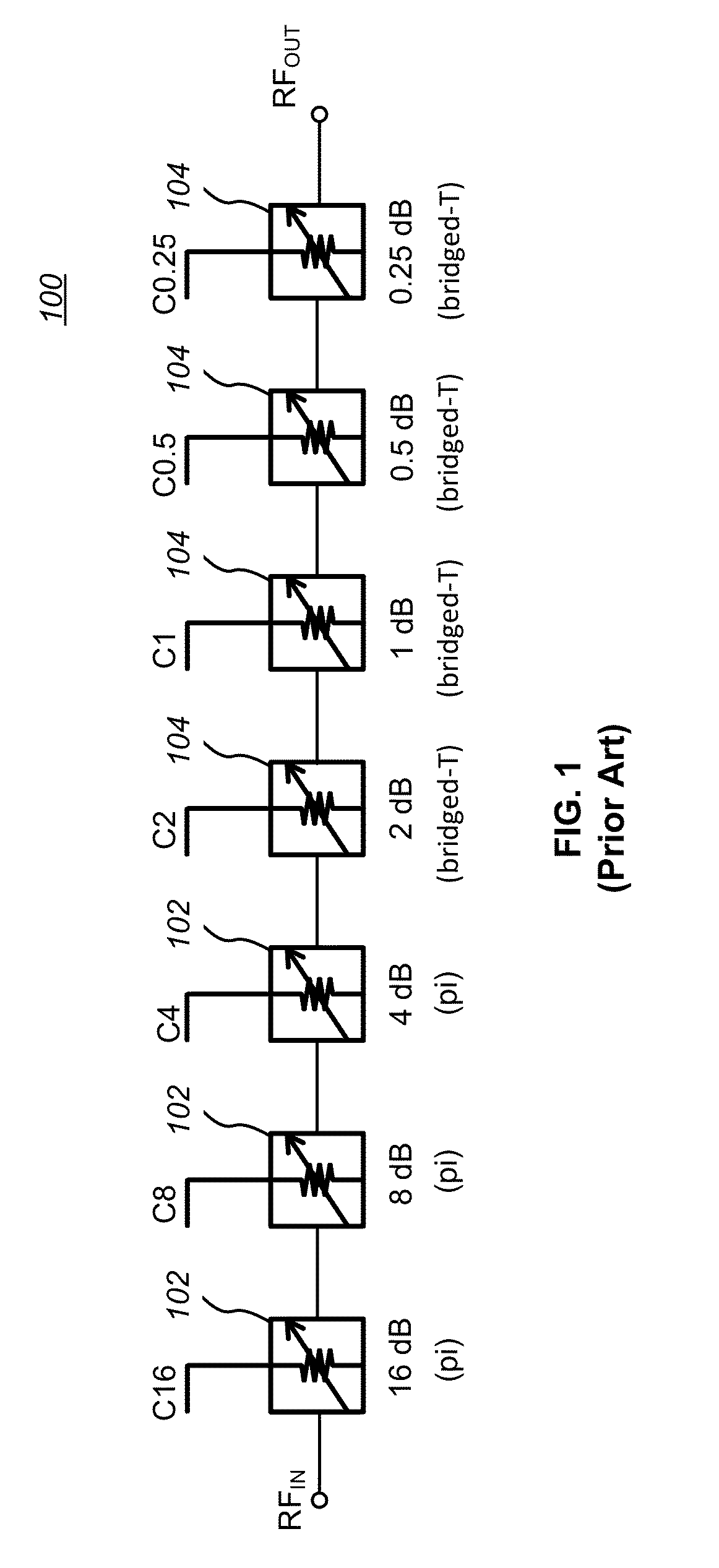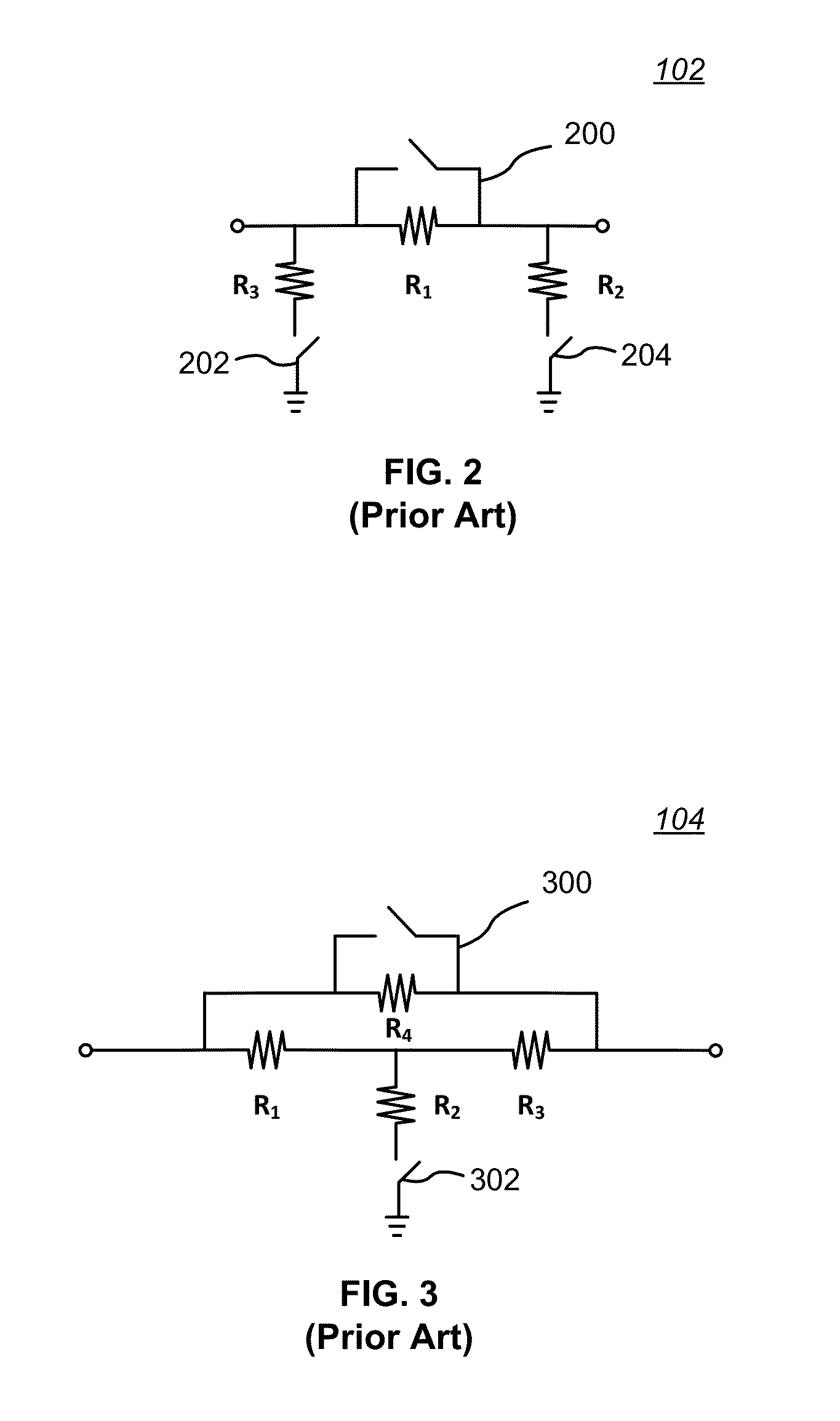Segmented attenuator with glitch reduction
a segmented attenuator and glitch reduction technology, applied in the field of electronic circuits, can solve the problems of binary-weighted dsas suffering from switching transients (glitches), unwanted detection errors, and dsa performance degradation, and achieve the effect of reducing the switching transients (glitches) and minimizing the amplitude of glitches
- Summary
- Abstract
- Description
- Claims
- Application Information
AI Technical Summary
Benefits of technology
Problems solved by technology
Method used
Image
Examples
Embodiment Construction
[0026]The invention is a method and circuit for significantly reducing switching transients (glitches) (both positive and negative) of digital step attenuators (DSA's) by employing a segmented DSA architecture that combines thermometer and binary coded stages. This approach reduces the number of attenuator stages switching at the same time and thus minimizes any glitch amplitude.
[0027]A segmented architecture reduces the number of simultaneously switched attenuators, but the total number of stages is increased. Thus, while embodiments of a segmented DSA may be realized with the same type of attenuator stages as in a purely binary-weighted DSA, the integrated circuit die (‘chip’) area may increase. Accordingly, in one embodiment, simple L-pad attenuators, each consisting of only four components, are combined in a resistor ladder network, as opposed to the series cascade of conventional attenuator stages, which typically contain six components per stage. The resistor ladder configurat...
PUM
 Login to View More
Login to View More Abstract
Description
Claims
Application Information
 Login to View More
Login to View More - R&D
- Intellectual Property
- Life Sciences
- Materials
- Tech Scout
- Unparalleled Data Quality
- Higher Quality Content
- 60% Fewer Hallucinations
Browse by: Latest US Patents, China's latest patents, Technical Efficacy Thesaurus, Application Domain, Technology Topic, Popular Technical Reports.
© 2025 PatSnap. All rights reserved.Legal|Privacy policy|Modern Slavery Act Transparency Statement|Sitemap|About US| Contact US: help@patsnap.com



